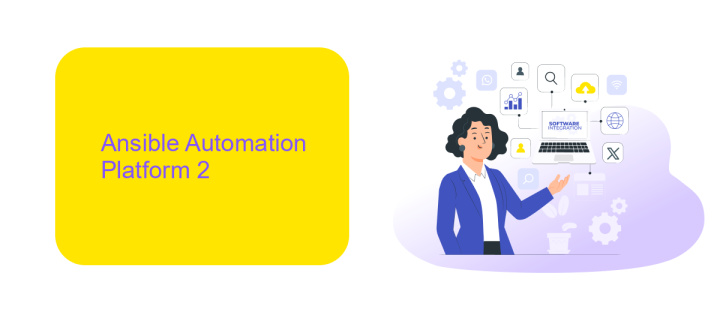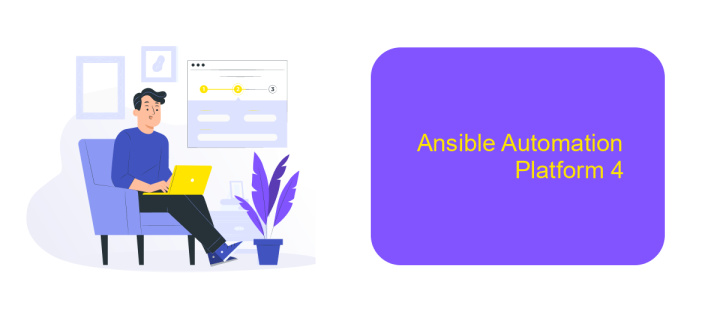Ansible Automation Platform Versions
The Ansible Automation Platform is a comprehensive solution designed to streamline IT automation across diverse environments. With each new version, it introduces enhanced features and capabilities that cater to the evolving needs of modern enterprises. This article explores the various versions of the Ansible Automation Platform, highlighting key updates and improvements that empower organizations to optimize their automation workflows efficiently and effectively.
Overview
Ansible Automation Platform is a comprehensive solution designed to streamline IT automation, enabling organizations to manage complex deployments and accelerate productivity. With its evolving versions, the platform offers enhanced features and capabilities that cater to diverse automation needs. Each version builds upon the previous, integrating user feedback and technological advancements to provide a robust automation experience.
- Version 2.0 introduced a more intuitive interface and improved scalability.
- Version 2.1 enhanced security protocols and added support for more cloud services.
- Version 3.0 focused on expanding integration capabilities and optimizing performance.
- Version 3.1 provided advanced analytics and better collaboration tools.
These versions reflect Ansible's commitment to providing a flexible and efficient automation platform. By continuously evolving, Ansible Automation Platform ensures that users have access to cutting-edge tools that simplify complex processes and drive innovation. Whether managing infrastructure, deploying applications, or orchestrating workflows, each version of Ansible Automation Platform empowers users to achieve their automation goals with confidence and ease.
Ansible Automation Platform 2

Ansible Automation Platform 2 introduces a comprehensive suite of tools designed to streamline and enhance IT automation processes. This platform builds on the robust capabilities of its predecessor by offering improved scalability, flexibility, and efficiency. Key features include an advanced automation controller, which allows for more precise control over automation tasks and workflows. Users can benefit from a more intuitive interface that simplifies the management of complex automation environments, making it easier to implement and maintain automated processes across diverse IT infrastructures.
Moreover, Ansible Automation Platform 2 supports seamless integration with various third-party services, enhancing its adaptability to different operational needs. For organizations looking to optimize their automation strategies, ApiX-Drive can be a valuable addition. This service facilitates the integration of multiple applications and systems, allowing for smooth data transfers and synchronization. By leveraging ApiX-Drive alongside Ansible Automation Platform 2, businesses can achieve more cohesive and efficient automation workflows, ultimately driving productivity and reducing manual intervention. This combination empowers IT teams to focus on strategic initiatives while ensuring consistent and reliable automation performance.
Ansible Automation Platform 3

Ansible Automation Platform 3 is a significant evolution in Red Hat's automation suite, offering enhanced features and capabilities for IT professionals. This version introduces improved scalability and performance, making it ideal for managing complex infrastructures. With a focus on user experience, Ansible Automation Platform 3 streamlines workflows and simplifies the automation process, enabling teams to deploy applications faster and with greater reliability.
- Enhanced Automation Controller: Provides a more intuitive interface and advanced analytics for better insights.
- Automation Mesh: Facilitates distributed execution of automation tasks across multiple environments.
- Execution Environments: Standardizes the automation runtime, ensuring consistent and reliable operations.
- Content Collections: Expands the library of reusable automation content, speeding up deployment times.
- Advanced Security Features: Strengthens compliance and security with improved access controls and auditing.
Overall, Ansible Automation Platform 3 empowers organizations to automate more efficiently and securely, reducing operational overhead and accelerating innovation. By leveraging its robust features, companies can achieve greater agility and adaptability in their IT operations, ultimately driving better business outcomes. As automation continues to evolve, Ansible Automation Platform 3 stands out as a comprehensive solution for modern enterprises looking to optimize their processes.
Ansible Automation Platform 4

Ansible Automation Platform 4 represents a significant advancement in automation technology, offering enhanced features and capabilities for IT operations. This version introduces a more intuitive user interface, making it easier for teams to manage complex automation workflows. With a focus on scalability and flexibility, Ansible Automation Platform 4 allows organizations to streamline their automation processes effectively.
One of the standout features of this version is its improved integration capabilities. It seamlessly works with a variety of cloud services, enabling users to automate tasks across hybrid environments. Additionally, the platform's security features have been bolstered, ensuring that automation workflows are protected from potential vulnerabilities.
- Enhanced user interface for better usability
- Improved integration with cloud services
- Advanced security measures
- Scalable architecture for growing needs
Overall, Ansible Automation Platform 4 is designed to meet the demands of modern IT environments. By providing robust tools and features, it empowers organizations to automate efficiently, reduce manual workloads, and focus on strategic initiatives. This version is a testament to Ansible's commitment to innovation and user-centric design.
- Automate the work of an online store or landing
- Empower through integration
- Don't spend money on programmers and integrators
- Save time by automating routine tasks
Additional Resources
For those looking to deepen their understanding of Ansible Automation Platform versions, numerous resources are available to enhance your learning experience. The official Ansible documentation provides comprehensive guides and tutorials that cover various aspects of the platform, from basic configuration to advanced automation strategies. Additionally, the Ansible community forum is an excellent place to engage with other users, ask questions, and share insights about different platform versions and their use cases.
To streamline integrations and automate workflows, consider exploring tools like ApiX-Drive. This service simplifies the process of connecting Ansible with various applications, allowing you to automate data transfer and synchronize systems effortlessly. ApiX-Drive offers user-friendly interfaces and a wide range of supported applications, making it an ideal choice for enhancing your Ansible automation projects. By leveraging these resources, you can stay updated with the latest developments and optimize your use of Ansible Automation Platform across different environments.
FAQ
What is Ansible Automation Platform?
What are the main components of Ansible Automation Platform?
How does Ansible Automation Platform handle versioning?
Can Ansible Automation Platform integrate with other tools and services?
What are the benefits of using Ansible Automation Platform for IT automation?
Do you want to achieve your goals in business, career and life faster and better? Do it with ApiX-Drive – a tool that will remove a significant part of the routine from workflows and free up additional time to achieve your goals. Test the capabilities of Apix-Drive for free – see for yourself the effectiveness of the tool.


